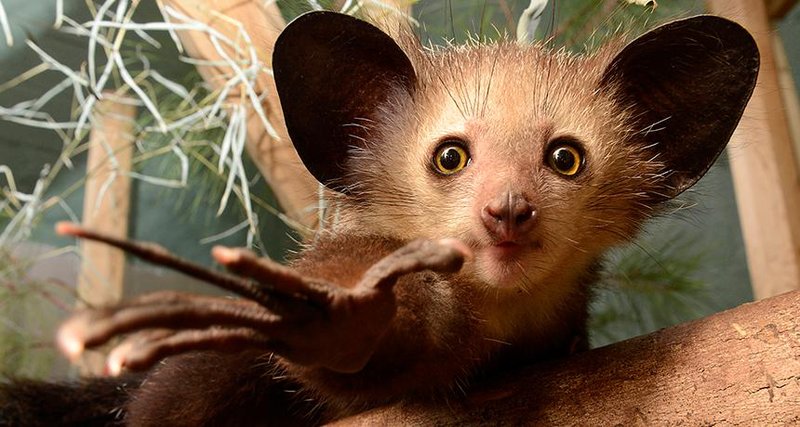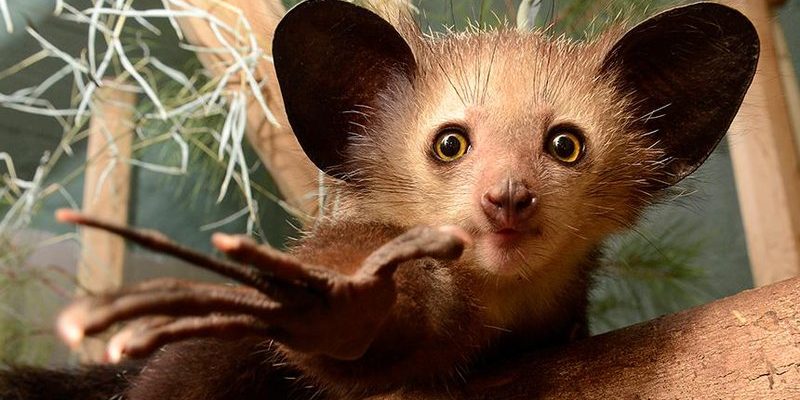
Aye-ayes are native to Madagascar and are part of the lemur family. Just like every parent wants what’s best for their kids, aye-ayes rely on their instincts and environment to raise their young in the wild. Let’s explore their parenting strategies, from the gestation period to how the little ones learn to fend for themselves. You might be wondering how this all works, so grab a cup of coffee, and let’s dive into the wonderful world of aye-ayes!
The Unique Life Cycle of Aye-Ayes
Aye-ayes have a fascinating life cycle that begins with a lengthy gestation period. Female aye-ayes typically carry their young for about four to five months. This time is crucial, as it allows the developing fetus to grow and prepare for life in the wild. After birth, mother aye-ayes are incredibly protective. They usually give birth to a single offspring, which is common among many primates.
Once the baby is born, it will stay with its mother in the nest, which is often found in tree hollows. This offers safety from predators and harsh weather. The mother fiercely guards her little one. It’s a bit like how we would do anything to protect our children, keeping them close and safe until they’re strong enough to explore on their own.
First Steps in the Wild
The first few months of an aye-aye’s life are spent in the safety of the nest. The young ones start to open their eyes around two weeks after birth. By six weeks, they begin to venture outside the nest under their mother’s watchful eye. During these early outings, they cling tightly to their mother’s back, learning how to navigate their surroundings.
As they grow, these baby aye-ayes start to develop the unique adaptations that will help them survive. Their long fingers, which they use for tapping on tree trunks to find insects, are a key tool for their future. Watching a little aye-aye learn to use its fingers is like witnessing a toddler figuring out how to use a spoon. They fumble and practice, constantly learning from their mother’s example.
Feeding and Nurturing
Feeding an aye-aye baby is no small feat. The mother will often regurgitate food for her young one initially, ensuring they get the necessary nutrients. As the baby grows, the mother teaches it how to forage. This is an essential skill for survival since aye-ayes primarily eat insects, larvae, and fruit.
Here’s how it works: The mother uses her long middle finger to tap on trees, creating vibrations that indicate where insects might be hiding. The baby watches intently, learning this critical skill through imitation. It’s a clear example of how learning through mimicry is a powerful tool in the animal kingdom. You might recognize this from how human children often imitate their parents!
Weaning and Independence
Around the age of five months, aye-aye babies begin the weaning process. This means they start eating solid food and gradually rely less on their mother’s milk. This transition is crucial, as it’s the point at which young aye-ayes must learn to become independent.
By the time they reach about one year old, aye-ayes are usually ready to leave their mother’s side and start living on their own. The mother’s role in teaching hunting and foraging skills is pivotal during this time. You might think of it like sending a child off to college, where they take everything they’ve learned and apply it in the real world.
Social Structures and Play
Interestingly, aye-ayes are not particularly social creatures. While they do live in loose family groups, the relationship between a mother and her young is often the closest bond. That said, young aye-ayes engage in playful interactions, which is essential for their development.
Play helps them learn social skills and practice their physical abilities, like climbing and jumping. It’s almost like when kids jump on a trampoline, honing their coordination and strength. This playful behavior is crucial, as it prepares them for the challenges of life in the wild.
Challenges in Raising Young Aye-Ayes
Raising young aye-ayes is not without its challenges. Madagascar’s environment poses various threats, from habitat loss due to deforestation to potential predators like snakes and birds of prey. The mother aye-aye must be very vigilant to keep her young safe.
Additionally, climate change is affecting their habitat, leading to fewer food resources and nesting sites. Aye-ayes rely heavily on specific trees for food and shelter. As those resources dwindle, it becomes increasingly difficult for mothers to rear their young successfully. It’s a stark reminder that the survival of species often hinges on the health of their environment.
The way aye-ayes raise their young is a beautiful example of nature’s ingenuity. From a lengthy gestation to teaching them how to survive in the wild, these lemurs demonstrate incredible dedication to their offspring. Their nurturing process mirrors some of our own parenting experiences: protecting, teaching, and eventually letting go.
As we continue to learn about aye-ayes and their remarkable adaptations, we uncover the intricate connections between survival and nurturing in the animal kingdom. Each cute little aye-aye is not just a wonder of evolution but also a testament to the resilience of life. So, the next time you think of parenting in the wild, remember the aye-aye and the lessons it teaches us about care, survival, and the beauty of nature.

